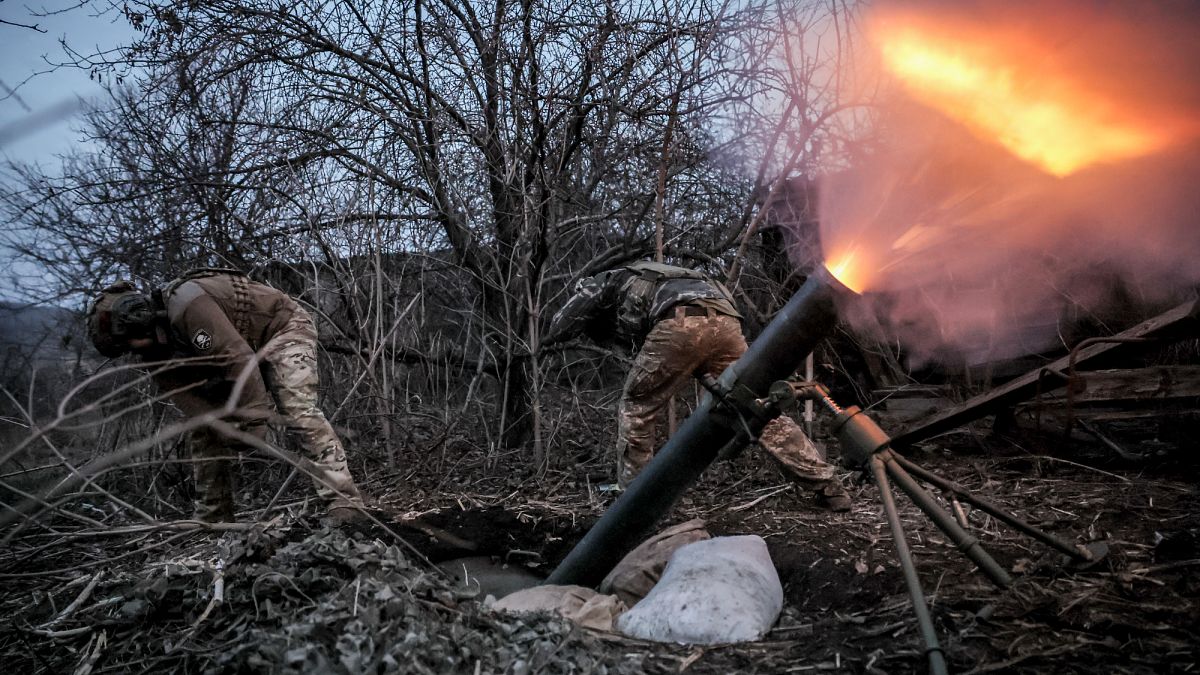ADVERTISEMENT
Russia wants parts of Ukraine. President Volodymyr Zelenskyy refuses to concede territory. And leading the peace talks after more than three years of war is Donald Trump’s US administration, which has repeatedly criticised the scale of Washington’s support.
If a deal is reached, the questions will be who will ensure Ukraine’s security after the war and who will pay for its reconstruction. But if there is no peace agreement, the aid provided by the United States could further shrink. That raises another question: who has the capacity to fill the gap?
Which countries are contributing the most to Ukraine’s war efforts?
So far, Ukraine has received more than €309 billion from at least 41 countries, either in military, humanitarian, or financial aid, according to the Kiel Institute for the World Economy, a German-based think tank.
Most of this assistance has come from NATO allies, 23 of which are also EU member states. Canada has allocated €11.94 billion, while Norway has given €6.49 billion between January 2022 and June 2025. Non-NATO countries such as Australia, Japan, Switzerland, Austria, South Korea, and Ireland have also provided significant support.
Meanwhile, the US spent $130.6bn on Ukraine (€111.28 billion), representing 37% of total government support to the warn-torn nation. But collectively, Europe has contributed even more: €138 billion in total, combining EU-level assistance with bilateral contributions from individual countries inside and outside the bloc.
Within Europe, Germany (€21.29bn), the UK (€18.61bn), the Netherlands (€10.89bn), and France (€7.56bn) stand out as the largest donors. At the other end of the scale, Hungary, Slovenia, and Greece contributed between €0.05bn and €0.15bn each.
Could Europe fill a US gap?
At least on paper, filling the gap doesn’t look impossible.
Estimates based on 2024 data suggest Europe would only need to raise its support by 0.12% of GDP to offset a complete loss of US military aid.
In fact, Europe already proved it could step in—at least temporarily. When the US paused all support to Ukraine in May and June 2025, with no new aid announcements, Europe not only filled the gap but surpassed Washington for the first time since June 2022. The EU and its members allocated €72 billion compared to the US’s €65 billion.
Still, money is just one part of the equation.
Since Donald Trump’s return to the White House, US aid to Ukraine has plummeted, though Washington remains the single largest donor. Beyond cash, the US provides critical military hardware: 305 infantry fighting vehicles, 201 howitzers, 18 air defence systems, and 41 HIMARS rocket launchers.
The real test lies in whether Washington continues delivering capabilities that Europeans finance—or whether there’s a full halt in American equipment deliveries and intelligence sharing.
“A complete loss of US support would leave a hole significantly larger than the numbers alone suggest,” wrote Luigi Scazzieri, Senior Policy Analyst at the European Union Institute for Security Studies (EUISS).
He stressed that air defence systems and intelligence are particularly difficult for Europe to replace with the same quality and scale as the US.
Meanwhile, the EU is also racing to strengthen its own defences against a potential Russian attack by 2030. Yet progress is slower than desired, especially in acquiring major high-end equipment.
According to a recent analysis by the Brussels-based think tank Bruegel, Europe’s defence industry—despite recent investments—remains “highly vulnerable” and heavily dependent on imports from the US.
Researchers from Bruegel and the Kiel Institute for the World Economy found that Europe still relies heavily on Washington for hypersonic missiles, next-generation jets, AI-integrated systems, and intelligence.
“There has been some increase in various systems—artillery in particular has grown substantially—but these increases are still relatively small compared to the overall demand,” said Bruegel’s senior researcher Guntram Wolff at the June launch of the report.
The gaps are stark. In 2023, Europe fielded 1,627 main battle tanks, while projections suggest it will need between 2,359 and 2,920. For air defence systems like the Patriot and SAMP/T, stock levels in 2024 were 35 units—less than half the 89 required.
“Major investments in research and development will be essential,” the report’s authors advised EU policymakers and national governments.
Read the full article here


